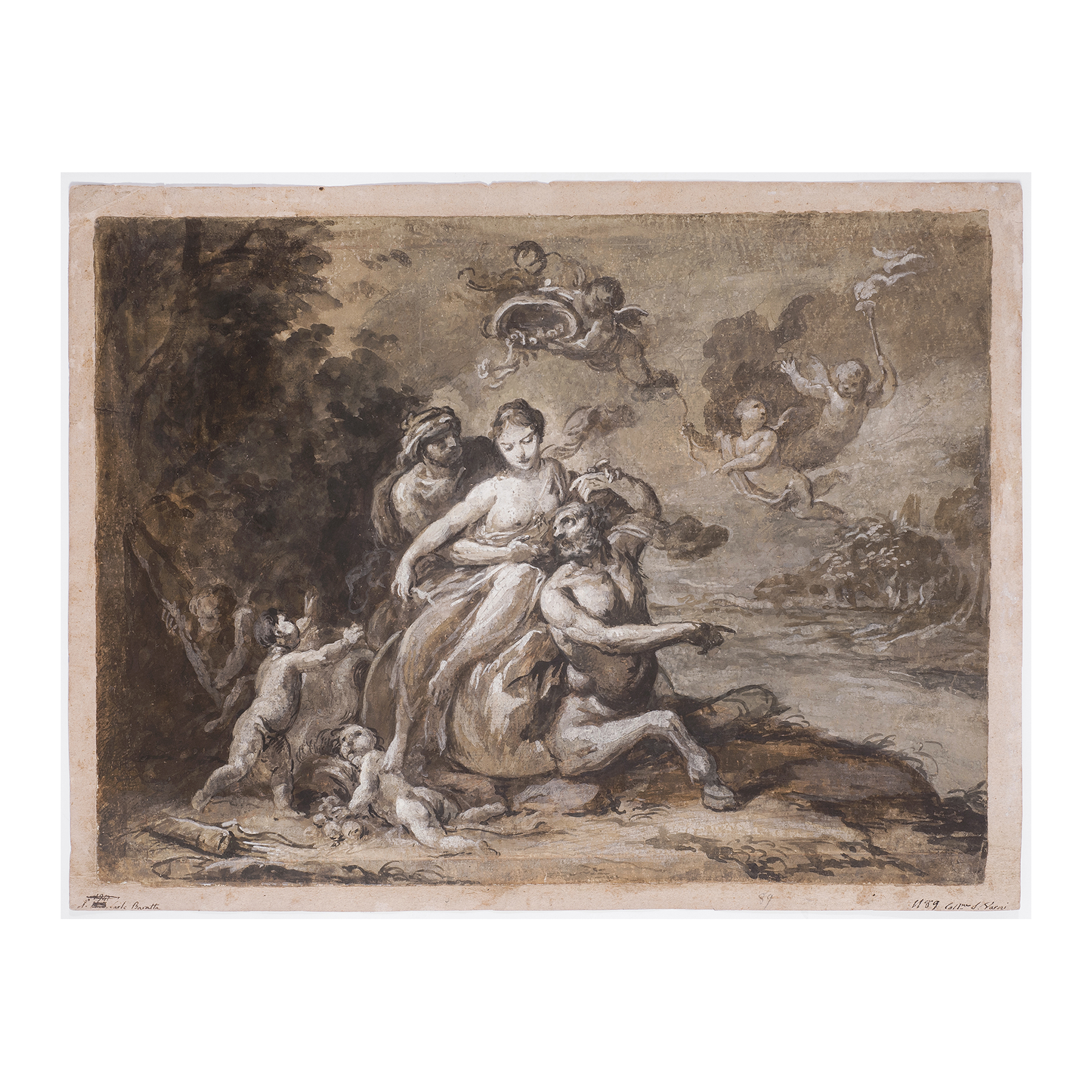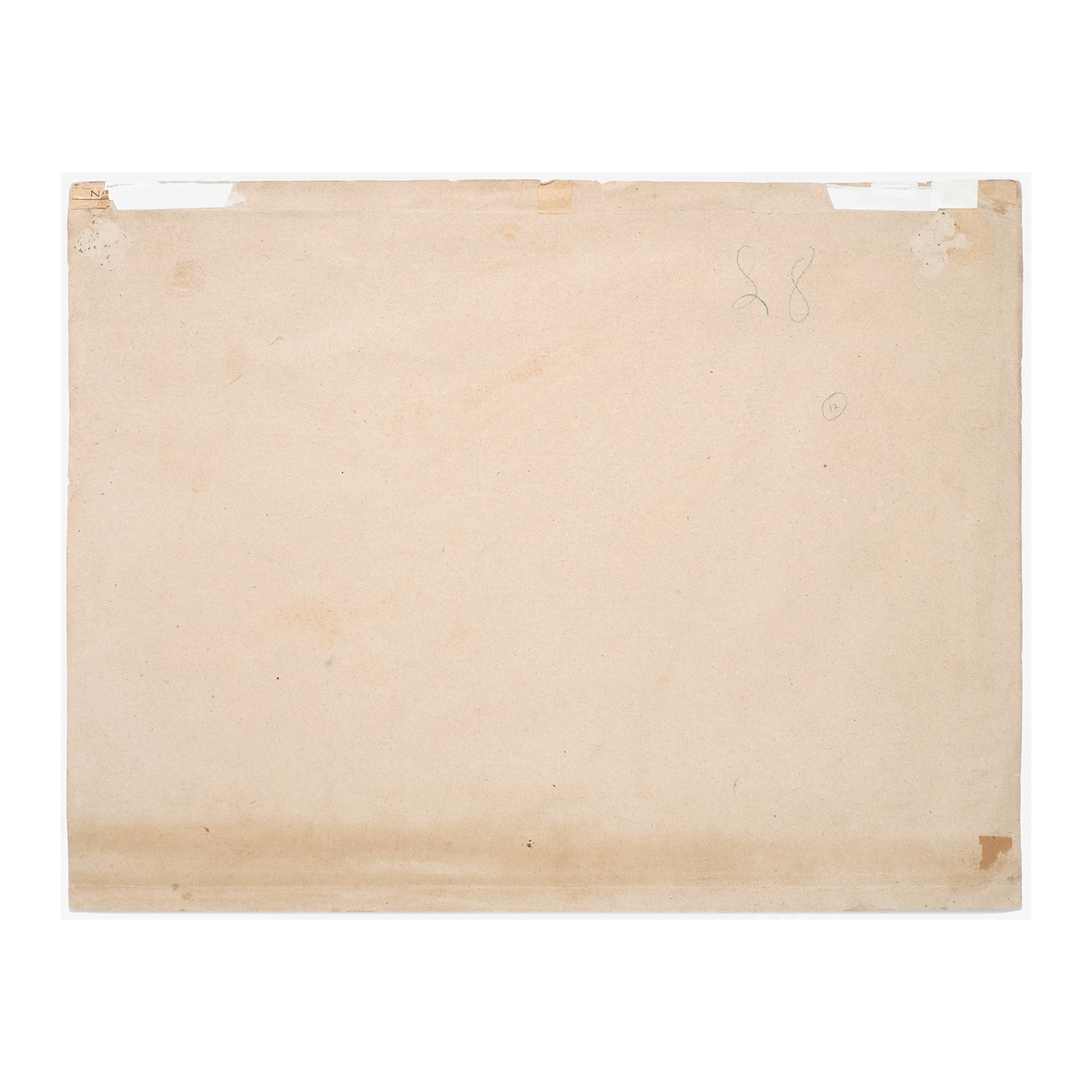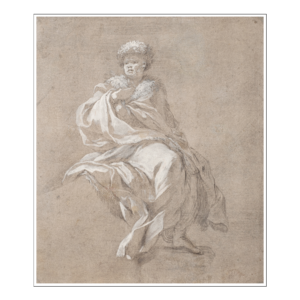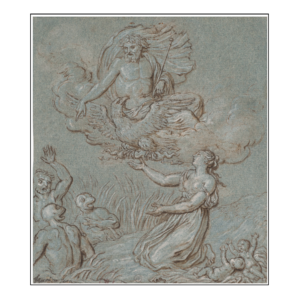Carlo Alberto Baratta
Genoa 1754 – 1815
Hercules Placing Dejanira on the Back of Nessus the centaur
Inscribed and numbered N°. Carlo Baratta at lower left of the mount and inscribed 1189 Coll-ne S. Varni at lower right of the mount.
Brown and grey wash, heightened with white gouache.
338 x 449 mm – 13 ¼ x 17 5/8 in.
Provenance – Santo Varni Collection, Genoa.
Initially self-taught because his parents’ strongly opposed his desire to devote himself to painting, Carlo Baratta finally received their permission to enter the Accademia Ligustica founded in 1751.
This passionate artist mainly referred to Genoese Baroque artists, such as Castello, Piola, Ferrari and others, who whose models he copied when studying on his own. Yet he was not insensible to the calmer style practiced by his contemporary Neoclassical painter Giovanni David. Like him, Carlo Baratta was a very active stage designer and set painter. In 1782 he began to work for the Teatro Sant’Agostino, Genoa’s leading public theatre since its opening in 1702 and on which stage Paganini gave his first concerts. Some remaining drawings give evidence of this activity, such as, for example, the Underground staircase, of Piranesian inspiration, in the collection of the Palazzo Rosso in Genoa. However, unlike David, Baratta never left Genoa.On some occasions the two artists worked together, like, for example, in the church of Nostra Signora del Carmine and the church of Sant’Agnese.
Carlo Baratta painted several decorations in Genovese and Ligurian churches, among which the Apparition of the Virginin the shrine of the cathedral of Nostra Signora dell’Orto in Chiavari, the Translation of the Image of Our Lady of the Garden for the vault of the same cathedral, the Presentation at the Temple in the basilica di Santa Maria Assunta in Camogli and the Education of the Virginin the Capuchin convent in Voltaggio. During the revolutionary period, he was entrusted with the organisation of a museum in which were to be gathered the works confiscated from religious orders under Napoleon.
The scene presented in this drawing is inspired by Ovid’s Metamorphoses. It shows Hercules placing his wife Dejanira on the back of Nessus the centaur who pretended to be willing to help them cross the Evenus, which had overflowed its banks, by carrying them one by one on his back. But when he got to the middle of the river, Nessus abused Dejanira and furious Hercules wounded him with an arrow. Finding his wound mortal, Nessus gave Dejanira a remedy against the infidelity of her husband, which in fact was a poison. She followed his advice and gave Hercules a tunic dipped in the remedy. Seeing the suffering of her husband, desperate Dejanira put an end to her life, and Hercules was soon consumed too.
This drawing demonstrates a highly refined technique, rather typical of the artist’s work and adopted from Genovese baroque artists: the penmanship in pen and brown ink is reminiscent of the ‘Casa Piola’, whereas the heightening with white gouache may be the influence of Valerio Castello and Gregorio de Ferrari. This gracious ornate sheet is still rather Rococo in spirit and can be compared to his Theft of the Palladium during the Trojan War (Palazzo Rosso, Inv. 1629, Franco Sborgi, Pittura neoclassica e romantica in Liguria, Genoa, 1975, p. 66, no. 62, illustrated).





